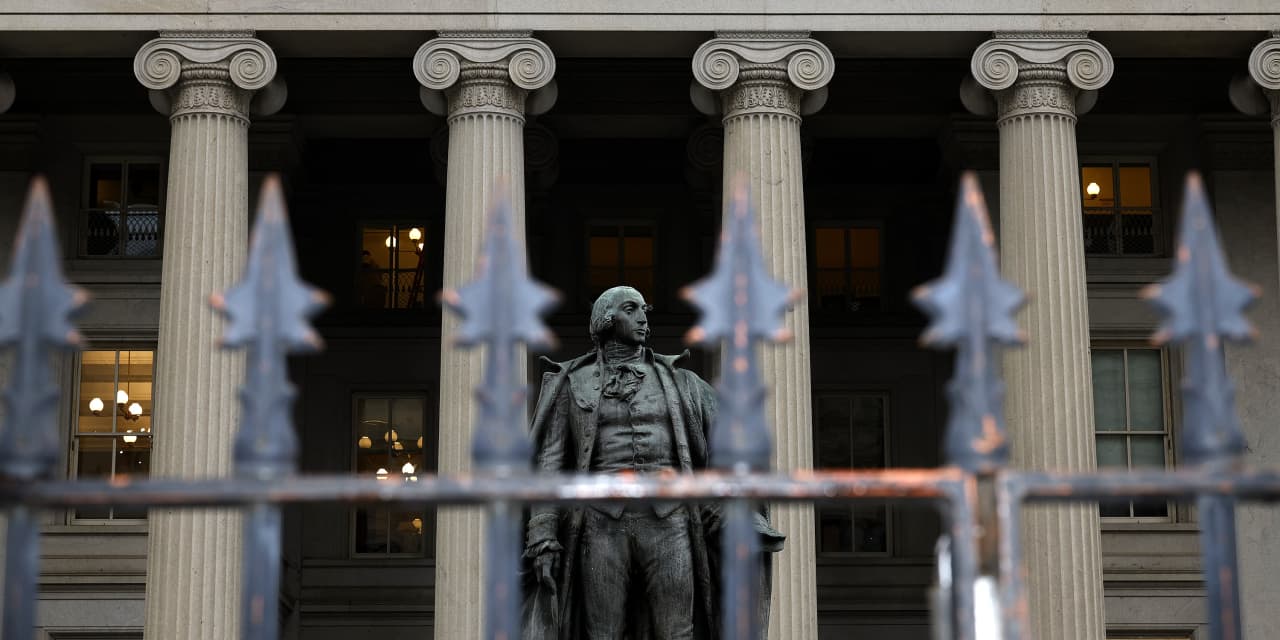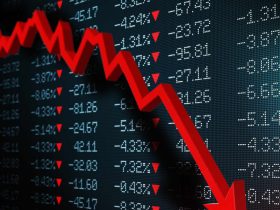The recent losses in long-term Treasuries continue a painful run for investors who bought the so-called risk-free assets. They can take comfort in a metric called duration, among other factors that suggest the worst of the losses could be behind them.
Government bonds came under pressure in August, causing yields, which move inversely to price, to surge. The yield on a 10-year bond reached 4.339% in August, the highest since around the time of the last financial crisis. Although yields eased to 4.257% on Friday, they remain elevated compared with July and represent a notable climb from the pandemic low of 0.501% marked on March 9, 2020. As a result, the
iShares 20+ Year Treasury Bond exchange-traded fund
(TLT) has suffered losses of 15% annualized over the past three years.
What’s driven yields higher? It’s more like, what hasn’t. Higher inflation and the higher interest rates needed to combat it have led investors to demand an increased premium to hold longer-dated bonds. High bond issuance by investment-grade companies–nearly $50 billion on Tuesday and Wednesday alone, according to analysts, versus the $64.6 billion seen in all of August–also pressured long-dated Treasuries this past week, as investors demanded more yield to get all the deals done.
As a result, the 10-year Treasury note dropped 0.8% this year including coupon payments through Friday’s close, and is now on track for a third straight year of losses. That hasn’t happened in 250 years of U.S. history, according to analysts at Bank of America.
Taken together, it paints a bleak picture for investors looking to buy longer-dated government bonds this year and raises an important question: Why bother? The answers: Bond math, specifically a gauge known as “duration.” Duration may get confused with “maturity” since in plain English both suggest a ‘length of time’ but, in the bond world, the terms mean very different things. Maturity is simply how long until a bond issuer has to return the principal to investors. Duration is the term for a bond’s sensitivity to interest rates. The lower the duration, the less an investor will lose when yields rise.
And duration has been coming down. The metric for a 10-year government bond was at 8.12 on Thursday versus 9.06 at the beginning of March 2022, when the Fed began raising rates. Duration has declined even more dramatically for 30-year Treasuries, to 16.789, from 21.85, over the same period. This implies that even if interest rates continue to rise, bond prices should not drop as much as they did earlier in the rate-hike cycle.
Besides looking at the drop in durations, Marty Fridson, revered as the “dean of high-yield-bond analysts,” recommends investors focus on yield gains instead of bond price fluctuations. Yields made up 87% of the annualized total return on 30-year bonds over the past 30 full years, he told Barron’s. The 30-year has yielded 5.19% over that period.
“Most of your gains are coming from income anyway over bond price changes” rates,” says Martin Fridson, chief investment officer at Lehmann Livian Fridson Advisors. And now “you have less downside price risk in the event of a further rise in interest [rates].”
Investors debating investing in fixed income or the stock market can also take encouragement from knowing that the yield on a 30-year bond at 4.33% on Friday was just slightly behind the
S&P 500
earnings yield of 5.09% recorded on Thursday. The 30-year gave investors just 16.6% of the S&P 500’s total yield early in the pandemic, suggesting bonds are relatively more attractive now than they were before the rout.
Of course, no investment is a riskless proposition, and higher rates or higher inflation would likely cause prices to fall even more. But the fall in duration combined with higher yields can offer some reassurance to bond enthusiasts.
There’s far less to fear than there was just a short while ago.
Write to Karishma Vanjani at [email protected].
Read the full article here









Leave a Reply